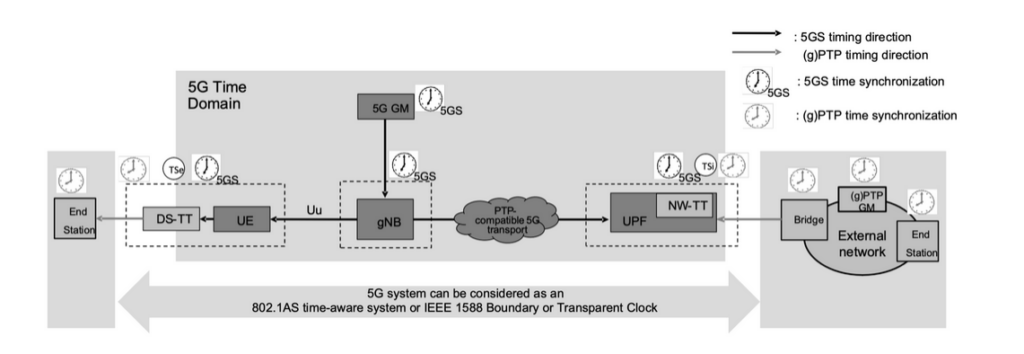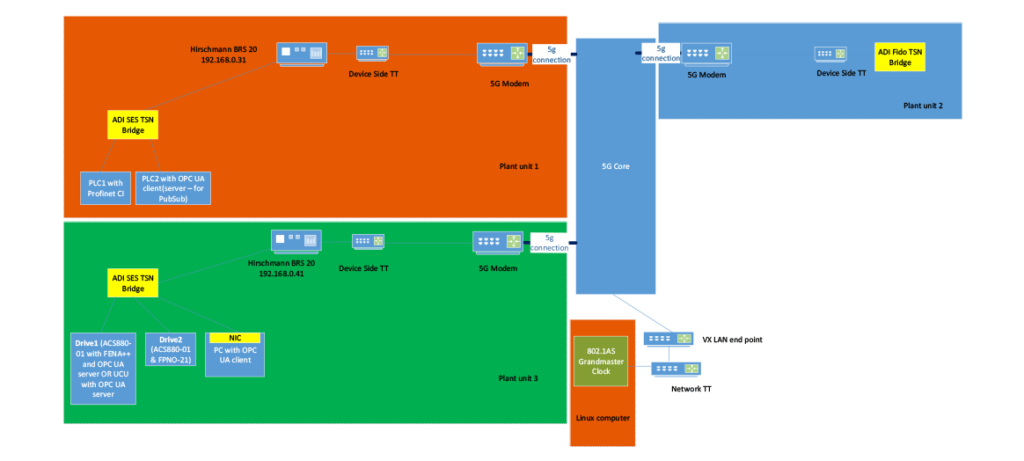One of the industrial automation ecosystems is known as the SCADA (Supervisory Control and Data Acquisition), which can be considered as a collection of systems, which need to collaboratively cover a set of functionalities, for example a set of power plants of different types (hydro, wind, photovoltaic, etc) are monitored and their function is optimized following the natural conditions, so that a maximum power amount is produced at any given moment. Such a complex ecosystem needs coordination from one or more central location.

The several remote sites present in the figure above may be connected using cellular technology and it is of an utmost importance that they share a common notion of time. Events, of various types and severities, happen constantly during the function of a SCADA system. Their timestamping should follow the common notion of time, to make sure that the right Sequence of Events may be recomposed at any moment, at the central control room or wherever needed, in order to be able to supervise a requested functionality which needs to follow a certain timely procedure, or to support troubleshooting or root-cause analysis in case of faults.
The topology of such systems is today a combination of cellular and wired technologies. The 3GPP TS23.501 specification comes into supporting the IEEE 802.1 clock synchronization concepts of IEEE 802.1 AS with a proposal which considers the cellular system as configured to operate in one or multiple PTP instances and to operate as a time-aware system, as defined by IEEE 802.1AS.

Due to ABB’s presence into IEEE 802.1 TSN TG and the collaboration with the Aalto University on aspects related to cellular communication and services needed by the industrial automation, such as the provision of correct clock values for device-level timestamping of events used in SCADA ecosystem-level Sequences of Events, participation to several EU projects (e.g. IoT-NGIN, Zero-SWARM) triggered the creation of a small-scaled model for a SCADA system, by creating:
- Europe’s first 5G LAN which works in layer 2 networking (ethernet PDU), with the support of mobile operator DNA (part of Telenor Group), Huawei, Cumucore and Aalto University.
- Installation of a cabinet in one of ABB laboratories meant for motor control, including standalone network infrastructure connectivity device from vendors related to the industrial automation domain (Belden/Hirschmann, Analog Digital) which support TSN features.
- Creation of a demonstrative topology for the case of this article showing 3 small plant units.

The demonstrative model shown above is still under construction, so only preliminary measurements based on the capabilities of clock deviation reporting mechanisms of the involved network infrastructure connectivity devices were performed. These and the whole process could be resumed with some provisional points:
- Initial setup of the whole ecosystem was rather time-consuming, due to various UE equipment (5G-Modems) challenges into being configured for bridge MAC forwarding table for Ethernet frames, on the LAN side, instead of IP packets only (i.e. IEEE 802.1AS would need a functionality based on Ethernet frames at LAN level)
- There is a difficult market availability of UE equipment (5G-Modems) which is able to make available the 5G-System clock to a Device-Side TSN Translator device, as required by the 3GPP TS 23.501
- After some efforts related to the stabilization of the RAN function of the 5G-System, reported clock delays between a Clock Source located on the LAN-side of Plant Unit 3 and a Clock Target situation in Plant Unit 1 were between 5 ms till 15 ms.
Industrial automation needs optimized efforts for connectivity environment configuration, as it is shown in the first figure of this article – thus a mechanism of interfacing, showing the cellular system as a black box with inputs and outputs would be ideal for it. Showing the 5G-System as a single PTP-Instance goes into this direction, but the cellular industry needs to follow up and really implement the features defined in the related 3GPP standards.

